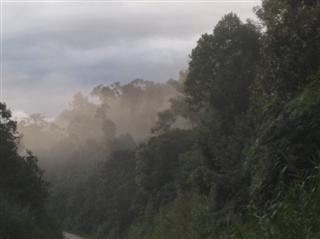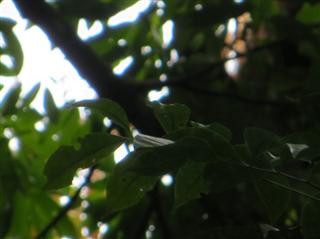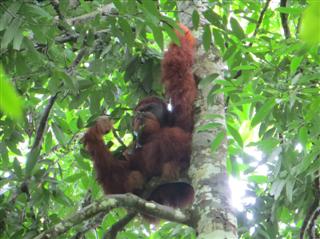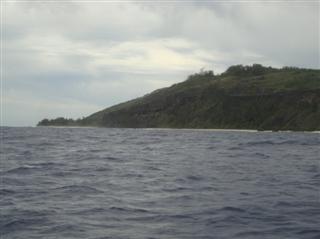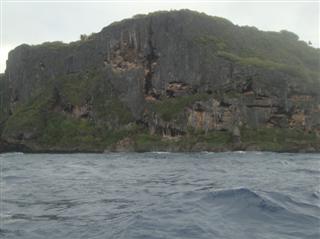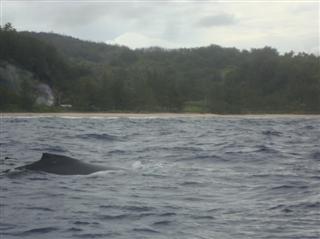I don't quite know what it is, but I have this innate fecklessness in spotting wildlife in the wild.
I suppose I started out on the wrong foot years ago in South Africa. I was on safari with my son Danny when somebody in the truck shouted '10 o'clock,' followed by '2 o'clock' from somebody else. It sounded like some sort of talking clock game, the complexities of which I did not yet grasp, so I just shouted 'half past six' followed by a snappy 'twenty to nine' from Danny.
The whole truck swiveled round 180 degrees to the right, craning their necks backwards, then back again and a further 90 degrees to the left, cracking them sharply into the bargain, before swinging back their hostile glare onto us. It was then that we realized, dimly, that this was no talking clock game at all, but a deadly serious means of showing the direction of some sighted beast.
It was then, too, that we realized, a little less dimly, that we had better stop our tomfoolery before we turned the whole truckload into 360-degree swiveling heads worthy of The Exorcist -- with angry fists pummeling down upon us.
And it certainly improves on the earlier modus operandi I had with the wife and kids. Then they'd be bawling: 'There, Dad, there, Can't you see.' And I'd be bawling back: 'Well, where the f... is there, damn it.' The virtual timepiece is a great improvement on that.
Wildlife - what wildlife?
But even with the mental Rolex, my life seems to be an ongoing performance of how to miss wildlife without really trying, whether they're our closest cousins, the monkeys and apes, more distant mammal relatives like deer and bears, or yet more distant kin on the wing or the fin. Everybody's already busily snapping away and I'm a johnny-come-lately, discerning the creature a half an hour later, if at all. Ok, I do see that giraffe over there -- I can hardly miss its head and neck towering over the trees, but...
In the primeval rain forests of eastern Madagascar, in the Andasibe-Mantadia park, everybody's agog at the Indri, the largest of the lemurs, and I'm like Blind Pugh. Blind? My mental Rolex has even gone dyslexic. They all shout '2 o'clock.' So how come my head turns squarely to 10 a.m.? At last I make him out up a tree. He is indeed large, black and white, huge green eyes -- and totally unmissable.
Attempt to snap King of Saxony bird of paradise in the New Guinea highlands - where's the bird?
As for the Birds of Paradise in Papua-New Guinea, I do have a little excuse -- they're generally perched high and at some distance. Even then I discern the glorious King of Saxony with his long blue antenna-like head quills a couple of millennia after everybody else. Of course not even I can miss the birds of paradise that come and eat at the fruit stand that the Kumul Lodge has thoughtfully put out for them in its gardens beneath Mt. Hagen in the Papua-New Guinea Highlands.
Long-tailed bird of paradise with electric blue patch at Kumul
But it takes me aeons to make out the big-eyed tarsiers, arguably the world's smallest primate, sitting by the entrance to their abode in Tangkoko-Batuangas rain forest in northern Sulawesi, Indonesia. And it's the same with the echidna in Tasmania, one of the world's only two egg-laying mammals along with the duck-billed platypus. It's on the ground only a few feet away, and here I am Magoo-ing around.
I can't even show you a photo of that one because I managed to erase the camera's entire memory card while trying to get rid of a picture of a Tasmanian devil that was nothing but a blur.
Tarsiers in Sulawesi, Indonesia
And talking about cameras, I'm truly terrible. It's bad enough if the animal is stationary, but if it's moving, forget it. By the time I yank my camera into the ready position, the animal -- be it butterfly or leopard -- is most certainly not, having already flitted or slunk miles away from the belatedly prying lens. It's even worse now with those digital cameras that have no viewfinder, just that back screen which shows you absolutely nothing if the sunlight is anywhere near it.
Even when it's not, my aim is abysmal. I just can't focus when I hold it so that I can see the screen. It gets so bad with the orangutans in Sumatra that the guide forcibly GPS-es my head in the right direction with a firm grasp and sharp twist from both his hands, then ends up snatching the camera away and taking the photos for me for the next two days, replacing my blurred green smudges with vivid red apes.
Yours Truly's attempts to photograph an alpha male orangutan
The guide's attempts to photograph an alpha male orangutan
I can't miss the cheeky black macaques in Tangkoko-Batuangas, though. They sit in front of me, all sexually aroused and snarling. 
Hello mate, I'm a black macaque. Who are you?
But serendipity does sometimes smile upon me. A few months ago I was on a tossing, rolling tin motorboat on the roiling South Pacific off the Austral island of Rurutu in French Polynesia, looking for whales. You see, the mothers migrate back to Antarctica with their calves from July to October close to shore.
Over there! 11 o'clock, shouts one of our fellow sailors. Everybody cranes forward but it turns out to be the cusp of a wave. 3 o'clock, shouts another, but by the time my dyslexic clock twists back from its misplaced 9 a.m., all I see is the descending tip of a tail.
There! 1 o'clock! This time not even I can miss it, a giant grey back arcing through the water, a huge tail emerging from the waves, then smacking back down again. Of course, by the time I manage to ready my camera I take magnificent photos of miles of empty water. And so it goes on, whale after whale, empty water after empty water.
Whale photo shot. What whales?
In the end I'm so disgusted that I focus on taking shots of the limestone caves in the island's volcanic cliffs.
Shoreline cliff shots
As I look back through the day's disasters, there -- in one of my Robert Capa moments shooting the shoreline -- is the undeniable shape of a whale, captured by my camera unbeknownst to me, unseen by the human eye.
The accidental whale

